Destinations
MIONICA, A MUNICIPALITY READILY EXPECTING BETTER DAYS
On Good Waters
Famous for its beauties, waters, spas, fruit, cattle raising, but also for its insurrectionists and generals, its name is derived from the adjective mio (dear). Because of its tradition, it was doomed to backwardness after World War II, as ”reactionary” and ”Serbian, too Serbian”. However, in a strange turn of fate, abundantly present in Serbian history, the fact that it has no large industries and dirty technologies today turned into a great comparative advantage of Mionica, worth as pure gold
By: Luka Petrović
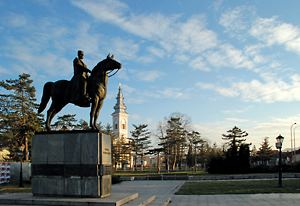 From the Divčibari top and the Kraljevi stolovi (King’s Tables) belvedere, 1.100 meters above sea level and about 100 kilometers from Terazije, the landscapes of the Mionica municipality spread before us, like on the palm of a hand, illuminated with the pure and luxurious winter sun. From here, the view reaches far. We can clearly see the Obrenovac thermoelectric plant in the north, and a little to the right, in the mist, the silhouette of Belgrade. On the other side are Valjevo and a wreath of beautiful mountains which were jointly named after this town. From the Divčibari top and the Kraljevi stolovi (King’s Tables) belvedere, 1.100 meters above sea level and about 100 kilometers from Terazije, the landscapes of the Mionica municipality spread before us, like on the palm of a hand, illuminated with the pure and luxurious winter sun. From here, the view reaches far. We can clearly see the Obrenovac thermoelectric plant in the north, and a little to the right, in the mist, the silhouette of Belgrade. On the other side are Valjevo and a wreath of beautiful mountains which were jointly named after this town.
The Mionica municipality covers 320 square kilometers. At the present, it has 18.000 inhabitants. It borders the municipalities of Gornji Milanovac, Ljig, Lajkovac, Kosjerić, Požega and Valjevo. It is one of the seven municipalities whose backbone is the mountain wreath starting from the Drina and ending in the center of Šumadija (Jablanik, Medvednik, Suvobor, Ravna Gora, all the way to Rudnik and Takovo). Besides the municipality center – Mionica, with a population of about 3.000, there are 35 villages in the municipality.
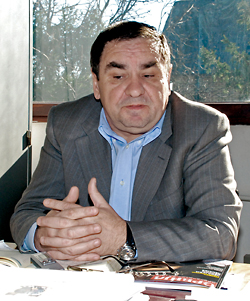 Ljubomir Pavlović, anthropogeographer, associate of Jovan Cvijić, writer of the book Kolubara and Podgorina, who used to live in this area a hundred years ago, writes that the town of Mionica was founded in mid-XIX century, near the village carrying the same name, as a road settlement around the Valjevo – Gornji Milanovac road. First, the county house was built in 1847, where the county office and clerks’ apartments used to be. A settlement where clerks, merchants and craftsmen lived was formed around that house. A meyhane was opened, an important place for social life at the time, and then many new merchants and craftsmen began settling. Ljubomir Pavlović, anthropogeographer, associate of Jovan Cvijić, writer of the book Kolubara and Podgorina, who used to live in this area a hundred years ago, writes that the town of Mionica was founded in mid-XIX century, near the village carrying the same name, as a road settlement around the Valjevo – Gornji Milanovac road. First, the county house was built in 1847, where the county office and clerks’ apartments used to be. A settlement where clerks, merchants and craftsmen lived was formed around that house. A meyhane was opened, an important place for social life at the time, and then many new merchants and craftsmen began settling.
The most beautiful sacral edifice is the Mionica church, built in 1856. Some of the members of the church board that managed the construction were Svetozar Nenadović, son of Archpriest Mateja, and Jevrem Rakić, grandfather of the poet Milan Rakić, while the leading builder was Todor Teodorović from Šabac. It was built looking up to churches raised in Vojvodina at the time, with elements of Baroque and late Classicism. It is one of the significant monuments of Serbian late Classicism.
A bit later, in 1864, an elementary school was opened. (There are records that a private school existed in the village of Rakići already in 1827, managed by Stepan Jovanović Gerenčić, a teacher from Zemun.) In 1870, the first library was formed within the school.
In the late XIX century, in 1895, an educated doctor, Dr. Svetislav Radovanović, came to Mionica. That same year, according to the decree of king Milan Obrenović, Mionica received the status of a town. A year later, in 1896, on the day of Holy Trinity, a fair was organized, where, among other things, there were ”13 tents, 20 shops and 13 carts with drinks”.
PRESERVED BY ”REACTIONARIES” STIGMA
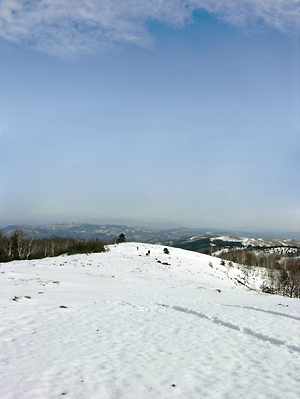 At the central Mionica square, immediately next to the old county building, present municipality building, stands a monument of the most famous man from Mionica, created by the sculptor Oto Jovan Logo. General Živojin Mišić, one of the greatest Serbian generals of all times and one of the most significant world generals in World War I, is represented riding a horse, in a uniform, on a high pedestal. At the central Mionica square, immediately next to the old county building, present municipality building, stands a monument of the most famous man from Mionica, created by the sculptor Oto Jovan Logo. General Živojin Mišić, one of the greatest Serbian generals of all times and one of the most significant world generals in World War I, is represented riding a horse, in a uniform, on a high pedestal.
Not far from there, on the stone bridge over the Ribnica river, also in Mionica, stands a memorial plate reminding us that exactly in this place, in a nearby coffee shop also existing today, Živojin Mišić took over the command of the Serbian First Army from wounded Petar Bojović, who was in strategic retreat at the time, under severe attacks of the Austro-Hungarians. Not long after followed the consolidation and tremendous counter-attack of the Serbian Army, which led to a complete breakdown of the Austro-Hungarians under the command of general Potiorek. That battle, eternally remembered under the name of Battle of Kolubara, was one of the most soul-stirring and most magnificent victories in European history of warfare.
In World War II, the seat of one of the two Serbian resistance movements, the one led by king’s general Dragoljub Mihailović, was not far from here, on Ravna Gora. Aleksandar, son of Živojin Mišić, was also a member of this movement, as well as many people from Mionica. In a German attack on the Ravna Gora staff in Struganik, Mišić’s birthplace, Aleksandar Mišić was captured with a group of officers. General Mihailović managed to avoid capturing and retreated deeper into the mountains. Convinced that the imprisoned Aleksandar Mišić is actually Dragoljub Mihailović, the Germans took Živojin’s son to Valjevo and shot him as the commander of the Yugoslav Royal Army in the homeland.
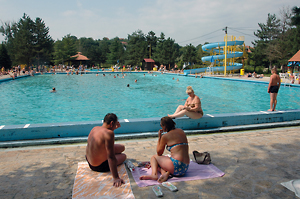 Due to all this, after World War II, the international support to the victory of the communist movement and creating socialist Yugoslavia, the Mionica area carried the stigma of ”reactionary” and ”Serbian, too Serbian” for a long time. Nothing was invested in the development of this area. Even today, a macadam road leads to the house of Živojin Mišić. Everything was late here, even electricity. In 1952, the part of Divčibare most visited by tourists was simply separated from the Mionica municipality and incorporated to the Valjevo municipality by one administrative-political decision. The effect of such politics is best seen on the number of inhabitants: in 1936, the population of the Mionica municipality was 37.000, while today it’s more than a half less! Due to all this, after World War II, the international support to the victory of the communist movement and creating socialist Yugoslavia, the Mionica area carried the stigma of ”reactionary” and ”Serbian, too Serbian” for a long time. Nothing was invested in the development of this area. Even today, a macadam road leads to the house of Živojin Mišić. Everything was late here, even electricity. In 1952, the part of Divčibare most visited by tourists was simply separated from the Mionica municipality and incorporated to the Valjevo municipality by one administrative-political decision. The effect of such politics is best seen on the number of inhabitants: in 1936, the population of the Mionica municipality was 37.000, while today it’s more than a half less!
However, in a strange turn of fate, abundantly present in Serbian history, the fact that it has no large industries and dirty technologies today turned into a great comparative advantage of Mionica.
WATER, FRUIT GROWING, TOURISM 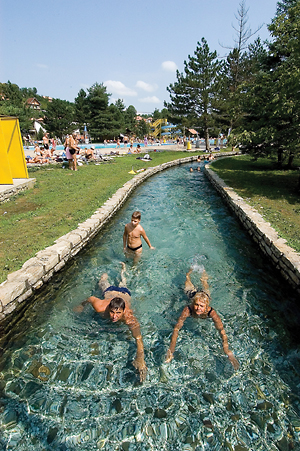 – Mionica is ready for better times. We have a well made spatial plan, a seriously and professionally designed development strategy – says Milan Matić, municipality president, for the National Review. – Mionica is ready for better times. We have a well made spatial plan, a seriously and professionally designed development strategy – says Milan Matić, municipality president, for the National Review.
– Our development strategy is based on several important elements, the main ones being water concessions. It is well known that water is an important resource today, and Mionica is a kind of a ”European water capital”. As much as four famous brands of water are packed in our area and shipped into the world (”Voda voda”, ”Gala voda”, ”Raj voda” and the whole program of the ”Sinalco” company, which moved its production plant from Subotica to Vrujci). Also agreed is the construction of the fifth water processing plant. We also place high hopes in the development of tourism, which is closely related to agriculture.
Three tourist centers have already become distinctive in the municipality, explains president Matić. The first one is the famous Vrujci Spa. Plans for the future expansion of this Spa have been made, including the spatial and urban general plan, while the work on the detailed plan is in progress.
– The plan is to erect a valley of luxurious hotels with 2.200 beds between the church in Vrujci and the existing hotels. The second (potential) tourist center is in the village of Mionica. There is a spa called Fidara there, not yet well known to the public. There are salutary springs, bathing pools, there is lots of space for investing in tourism objects and services, which will certainly be realized soon.
The third tourism trump of the Mionica municipality is a part of Divčibare which belongs to it, even after the revengeful decisions of the regime in the 1950s.
– This still unused part of Divčibare belonging to Mionica is of extraordinary beauty and it is very suitable for building ski tracks and tourism objects – points out president Matić. – We are already preparing urbanism conditions, which will be clear and strictly applied. We don’t want wild construction and Zlatibor repeating, with cottages erected without any order or sense, not to mention aesthetics. We will try to preserve that mountain wreath, that branch of Suvobor and Maljen.
Besides tourism, according to the words of the Mionica municipality president Milan Matić, this is also a fruit growing and cattle breeding area. Besides growing all kinds of fruit, especially plums and raspberries, the people of Mionica are famous as the best cattle breeders (the highest number of purebred heads of cattle compared to the number of inhabitants). They held that record in both Yugoslav states, and also maintained it today in Serbia. Stimulation for the fruit growing will also be the cooperation with ”Delta” company, which has already opened a water processing plant ”Gala voda”. Now they are starting up a production plant producing fruit juices. It goes without saying that the raw materials basis for such a plant is the abundance of high quality and naturally grown fruit in the Mionica area and this part of Serbia, while also planned is further organized development of fruit growing.
– There are also service activities, which we expect will employ a certain number of people. The future Horgoš–Požega highway will pass through these parts. A loop of this future highway will be built about ten kilometers from Mionica. One arm will go towards Mionica, and we expect many new investors and tourists to come down that road. Our obligation is to welcome them ready.
MONUMENTS OF UNEMBELLISHED HISTORY 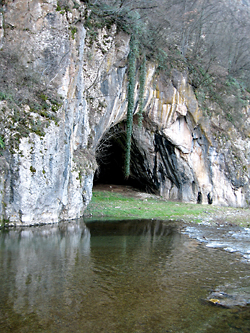 Besides the beauties of the untouched nature, clean water, healthy food, remedial air and spas, the Mionica area has many more other things to show to travelers and guests. Besides the beauties of the untouched nature, clean water, healthy food, remedial air and spas, the Mionica area has many more other things to show to travelers and guests.
The birth house of general Živojin Mišić in Struganik was reconstructed in 1977, its original appearance was restored and it was turned into a museum. It is equipped with original furniture from the XIX and first decades of the XX century. The exhibits in the house parallely testify about the most famous person of the Mionica area, general Mišić, the life of his family and the people of this area, about Serbia of his time.
Art historian Svetolik Nikolić, curator of the museum in general Mišić’s house and director of the Mionica Tourist Organization, vividly and descriptively speaks about the general’s life and warfare, about the exhibited furniture, clothes, shoes, tools the family used for cultivating land, growing fruit, breeding cattle. About how people were born, how they lived and how they died.
Not far from Mišić’s house in Struganik, inside the Ribnica canyon, in the village of Paštrići, there is an old Ribnica church, built in 1900, on the foundations of a monastery mentioned already in 1657 (burnt down in the time of Koča’s Frontier). There is an old school by the church, built in the 1880s, in the place where an even older school building was erected in 1839. It was the parish church of Živojin Mišić’s family, and it was the school he attended. Opposite of them, across the river, stands the entrance to the famous Ribnica Cave. Experts found a unique habitat of bats in that cave, as much as fifteen species, which is very rare.
While we listen to our host telling us about this place, watching the beautiful mountain river, we note: the Ribnica river, originating from the merging of Manastirica and Pakleštica, is a natural testimony about the cosmic unity of opposites and the awareness of our ancestors about it.
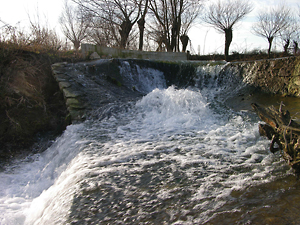 Several original edifices from the XIX century were preserved in the Mionica area, monuments of folk architecture, interesting not only for experts, but also for curious travelers. The Kovačević family house in Gornji Lajkovac testifies about the real life of a Serbian family in the XIX century. The Čitaković family house in Gornji Mušić is from the first half of the XIX century, as is the house of prince Jovica Milutinović in Sanković. Several original edifices from the XIX century were preserved in the Mionica area, monuments of folk architecture, interesting not only for experts, but also for curious travelers. The Kovačević family house in Gornji Lajkovac testifies about the real life of a Serbian family in the XIX century. The Čitaković family house in Gornji Mušić is from the first half of the XIX century, as is the house of prince Jovica Milutinović in Sanković.
In the village of Ključ, near Mionica, stand the remains of Velimir’s Palace, associated with the legendary aristocrat Velimir from the XV and XVI century. From the previous complex of edifices in that place, preserved are the remains of a single nave church from the XV century. Graves from the XVI and XVII century were also discovered, as well as foundations of some buildings, apparently monastery quarters.
The folk legend associates the church in Krčmar with Kraljević Marko. According to historical sources, there was a monastery here in 1736. In 1793, the church was renovated by the brothers Nikola and Milovan Grbović, dukes from the First Serbian Uprising.
***
Stone
The Mionica area is famous afar for its mines with stone of extraordinary quality. The renowned stone, which was used for building the Vienna Opera, for paving the Zemun quay, and for building so many other important buildings throughout Serbia and Europe, is extracted from the quarry by Struganik. Ljubomir Pavlović notes that stonecutting began developing in the 1840s in the Mionica villages of Struganik, Berkovac and Gunjica. Peasants chisel tombstones, stairs, whetstones. The customers come here to purchase, and their products are ordered as far as from Belgrade.
***
Saltpeter Cave
Besides the Ribnica Cave in the Mionica area, the attention of experts and curious travelers is also attracted by the Šalitrena pećina (Saltpeter Cave). It is also located in the picturesque canyon of the Ribnica river, by the village of Breždja. The entrance is ten meters high. The arcade is twelve meters wide and eight meters high. The total area of the cave is 620 square meters. The archeologists and speleologist have been interested in this cave for the last three decades. Traces of human existence from the Starčevo and Vinča culture were found, while traces of people from the Bronze and Iron Age were found in younger layers. From the XII to the XV century, it was occasionally inhabited by people. Saltpeter was found in the cave interior, which was used for making gunpowder in the First Serbian Uprising, and which named the cave.
***
Biologist
Not far from the Ribnica Cave, in his property ”surrounded with 200 hectares of woods” lives an extraordinary biologist Predrag Petrović, a vivid person, one of the most renowned European experts in bats. He led scientific expeditions all the way to Latin America. He was offered a professor’s position at the Belgrade University, a place in the supreme scientific institute, but he rejected it. It was not the life he wanted to live. He returned to his village, to his fatherland, to study bats and breed cattle, attempting to recognize and genetically strengthen some of the autochthonic species of domestic animals, among which is also the busha cow. He began establishing a unique museum of endangered animal and plant species. He spent 180 nights in the Ribnica Cave, studying the life of a colony of bats, and he could write a novel about it.
However, all this is for a separate story, a story we will once certainly tell to the readers of the National Review.
***
Rural Tourism
Rural tourism again livened in the Mionica area during the last years. There are more guests coming, especially from Vojvodina and Belgrade, some of them from abroad. The households in the villages of Ključ, Berkovac, Planinica and Popadić make a nice profit of it. New objects for tourists are erected and new activities developed. Especially interesting are the ethno-center at the foot of Divčibare and ”Ključ Raja” (”The Key of Paradise”) on the Lepenica river.
|
